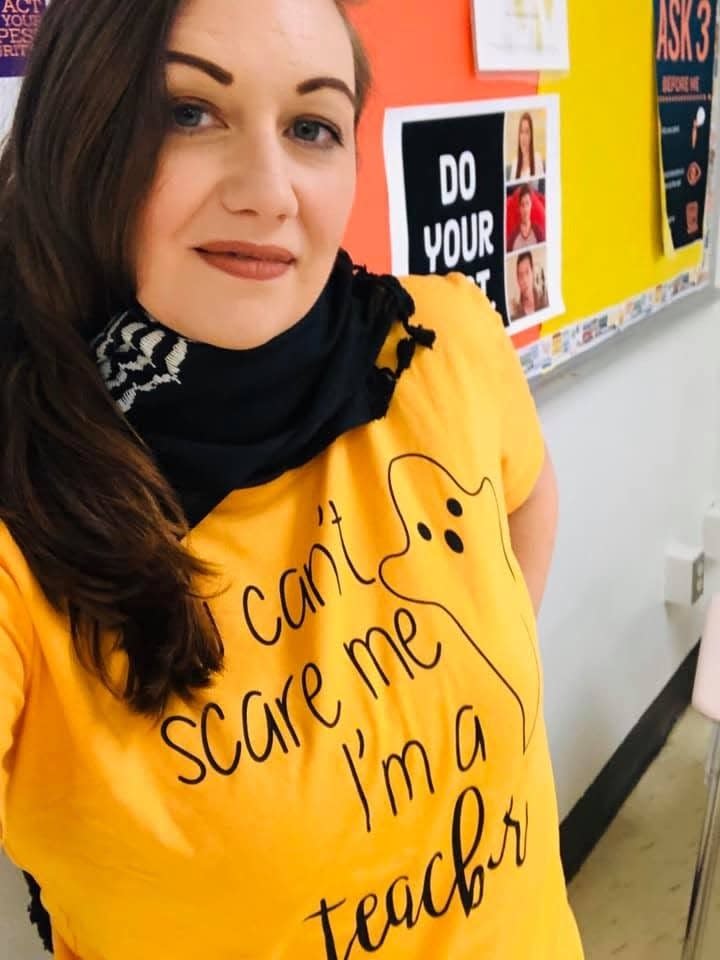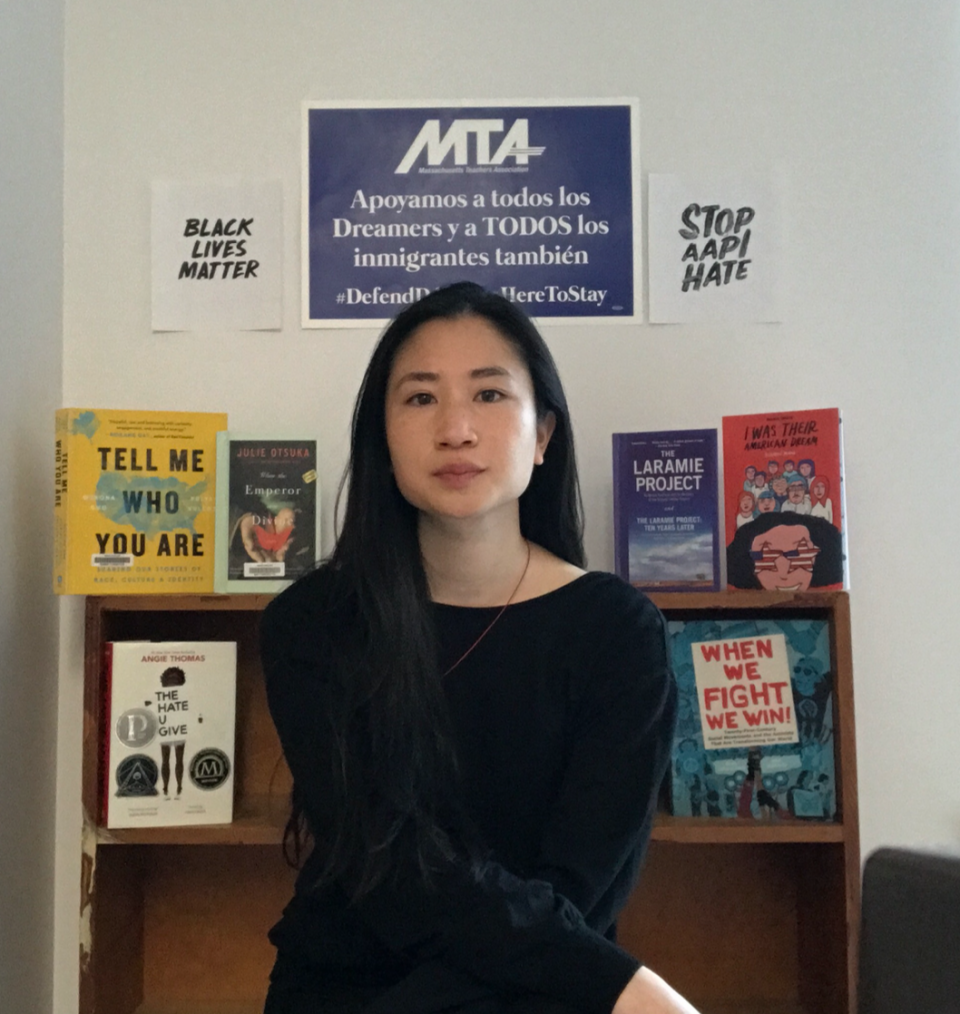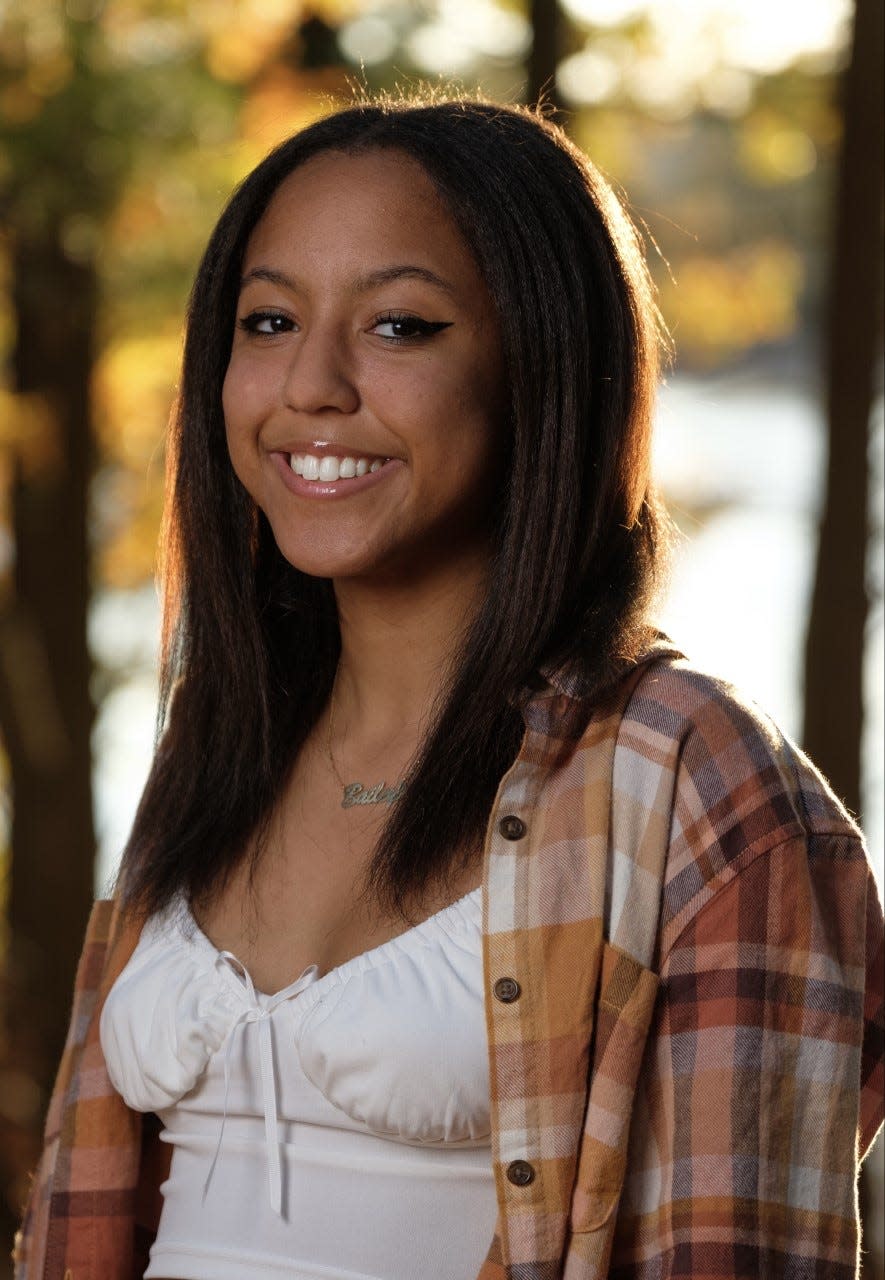Derek Chauvin's trial is a teachable moment. Here's how classrooms are discussing it.
- Oops!Something went wrong.Please try again later.
The last thing Kara Cisco wants is to traumatize her students – to force them to relive the pain of a moment.
Especially this moment last May in Minnesota: The death of George Floyd, and the nearly 10 minutes that led up to it as Derek Chauvin, a white man and former police officer, knelt on Floyd's neck.
But Cisco is a teacher near Minneapolis, the city where Floyd, a Black man, lived and died and where last year's wave of Black Lives Matter protests erupted in response to his death. Students of color make up about half of her school’s population.
Plus, Cisco's not just any teacher – she's a civics teacher. She can't teach civics without discussing race and law enforcement and civil unrest.

Now that Chauvin's trial is approaching its end, it's impossible – and, many educators would argue, irresponsible – not to talk about the case in social studies classes. That's especially true amid renewed protests in response to a police shooting of a Black man in the Minneapolis area. Daunte Wright, 20, was shot to death last Sunday in a city suburb by a white police officer during a traffic stop.
The question now for educators is how to talk about the trial in a way that’s thoughtful and constructive. How does a good educator address historic, tragic events in the nation, while also limiting the pain surrounding them?
Chauvin has pleaded not guilty to second-degree murder, third-degree murder and second-degree manslaughter charges. Closing arguments were set for Monday in what is arguably the most followed trial of the past decade.
Students debate use of force
On a recent Friday, as the Chauvin trial forged ahead, Cisco's students discussed media coverage and several policies dictating when a Minneapolis officer can – and should – use force on a suspect.
First, they identified words and phrases that stuck out from the coverage – injustice, murder, democracy. They scrutinized the nuances of policies and their role in Floyd's death.
One student argued that, regardless of his actions or the drugs that were found in his system, Floyd was murdered. "Without a doubt, we can determine that George Floyd was suffocated to death," said the student, Sofia Jerney.
Another student concluded that Chauvin's actions violated existing policies because "he wasn't in any danger." Chauvin acted the way he did, Saul Zis suggested, "most likely because of the stereotypes and the racism."
Autumn Steinke agreed: "The policy … allows for a lot of leeway. The officer could basically just say, 'Well, I felt threatened.' Does that excuse his murdering a person?"
Classrooms across the country are engaged in similar discussions that, at their core, look at fundamental questions of prejudice, civil rights and freedom.

Some classrooms, like Cisco's, have worked to dissect the more concrete aspects of the case. They’ve debated public-policy language and the logistics of criminal litigation.
Others, like Emily Lew's "Action Through Literature" course at Newton North High School in the Boston area, have analyzed the trial through the lens of historical and modern texts.
Lew's class focuses on "how our actions are often caused by our beliefs," she said. The goal is for students to learn how to be "conscious consumers of information."
This past semester, Lew's students have explored the idea of "power and space" – how they vary depending on identity and how they influence policing and race relations. They've done so through the lens of texts by authors ranging from Audre Lorde to Brent Staples to Ta Nehisi Coates.
Over the course of the semester, Lew, who's Asian American, noticed that her white students have become more inclined to pause before they speak. "They've found the power in listening deeply," she said.
The aim, both Cisco and Lew say, is to ensure students – especially those of color – feel like their classroom is a safe space where they can process confusing emotions and figure out how to act on them.
The dangers of secondary trauma
"Seeing this as a Black person, it's a lot more traumatizing than it is for someone who's white and seeing this," said Bailey Evans-Williams, a senior at Newton North High who's co-president of the school's Black Leadership Advisory Council. Forcing students to watch the footage of Floyd's death – even the witness testimony recounting it – "can be really insensitive," she said.
Which is in part why one Texas teacher's attempt at incorporating the trial into lesson plans garnered backlash.

High school students in the unidentified teacher's communications class, in a suburb of Dallas, were asked to serve as mock jurors in the trial, which kicked off in late March. As part of the assignment, students were expected to "be attentive to the actual trial, listening and paying attention to the evidence of both sides, defense and prosecution," according to an outline provided by the teacher and acquired by the local ABC-affiliate station, WFAA. The plan was to have students watch a livestream of the trial for 45 minutes a day.
Parents bristled at the assignment, submitting a letter to the district that highlighted how traumatizing the incident's footage has been for people of all ages, especially children. "You left students to handle their own emotions and mental health as they left your class, without proper professional support," the parents wrote in the letter, which was obtained by WFAA.
"The assignment was not approved by campus or district administrators," officials said in a statement provided to USA TODAY. "The matter has been addressed with the teacher, and the assignment was removed."
In interviews, educators talked about the idea of “secondary trauma” – the pain caused by indirect exposure to a disturbing event. Research suggests that rewatching the events such as the prolonged death of Floyd can take a significant hit on one's mental health because of that secondary trauma, which is also known as vicarious trauma, and manifest themselves through both physical and behavioral side effects.
Politics in the classroom
A recent poll by Educators for Excellence found that while nearly 2 in 3 teachers have been concerned this school year about systemic racism, just about a third report they had conversations with their colleagues about whether or how to address issues of racial justice and equity in the classroom.
Part of the reason could be the chilling effect that controversies such as that in Texas have on teachers who want to discuss race-related current events but fear doing so will incite backlash.
Last October, for example, an elementary-school teacher in a town near Kenosha, Wisconsin, came under scrutiny for her effort to talk about the police shooting of Jacob Blake, a Black man who remains paralyzed from the incident. Using a children's book, an educational video and a worksheet, the teacher, Melissa Statz, sought to teach her students about racism and the goals of the protests that erupted in response to the shooting. Questions in the worksheet included "What is the Black Lives Matter Movement trying to do?" and "How Do We Stop Systemic Racism?"
Parents in the predominantly white town weren't happy, accusing Statz of trying to "indoctrinate our kids." Some called on the school board to fire her.
The controversy is one of many, from Utah to Florida, that have riled schools in the past year or so over lesson plans addressing the Black Lives Matter movement.
This chilling effect is, students and educators argue, no less damaging. As Cisco put it, “not talking about this trial speaks just as loudly."
"You shouldn't always be on your tippy toes, scared to say something wrong," said high school senior Evans-Williams when asked what her advice for teachers would be. "I want it to be clear to teachers that the issues we talk about when it comes to racial justice and these fatal police shootings are human rights issues. This is not something you're taking a political stance on – it's not something we have to argue about."
Hal Harris, a former principal, recalls when Michael Brown, an 18-year-old Black man was killed by a white police officer in Ferguson, Missouri, in 2014. Harris was a civics teacher at a predominantly Black school in rural Arkansas at the time.

The day after Brown was shot, Harris, a Black man, had his students examine the burgeoning Black Lives Matter movement. They discussed their constitutional right to assemble and protest, how the uprising fit into the larger scheme of civil rights activism. They analyzed media coverage and historical texts.
It wasn't long before a parent of one of his few white students called the school's principal to complain. Harris "should be keeping politics out of the classroom," he remembers the parent saying.
"I was like, 'Uh, this is a civics classroom,'" said Harris, who now works with New Leaders, a national education nonprofit aimed at equipping school heads to be forces for change. "How do you keep politics out of it?" In his view, to keep politics out of the classroom is to keep Black empowerment out of it, too.
Follow Alia Wong on Twitter: @aliaemily.
This article originally appeared on USA TODAY: Derek Chauvin trial: How race, police and unrest are taught in school

